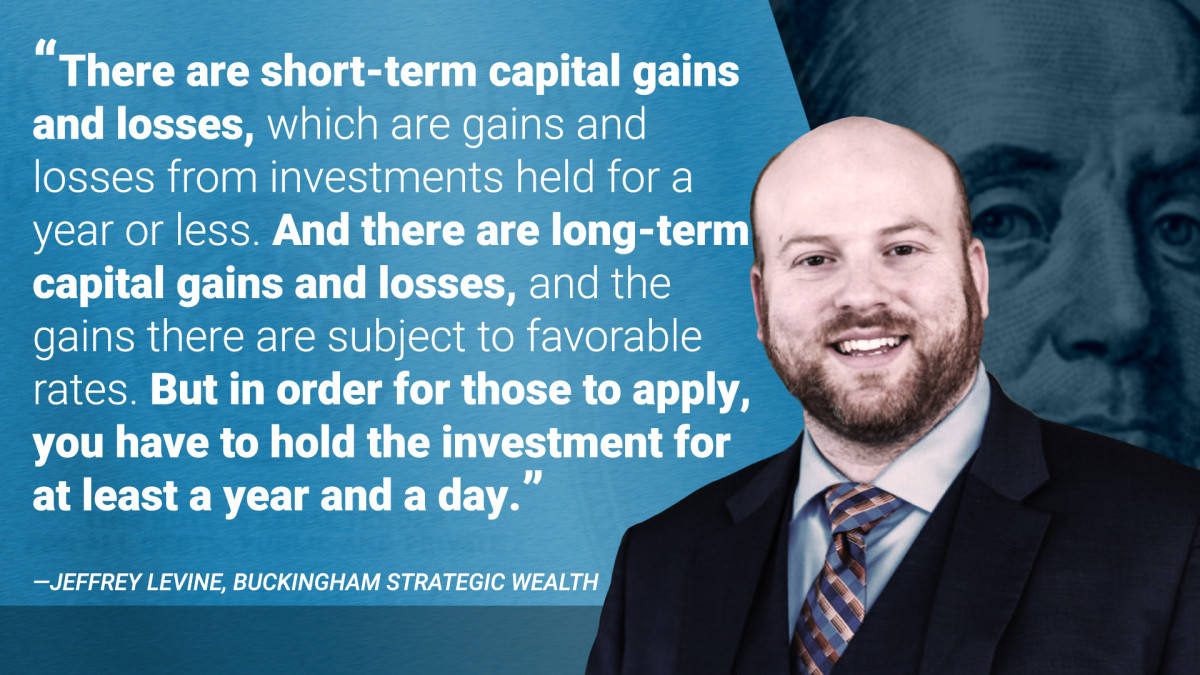The April 18th tax deadline has come and gone. But, tax preparation should happen all year long. Now is a great time to begin educating yourself about the many tax terms tossed around like capital gains and tax-loss harvesting.
TheStreet, combined with our partners at TurboTax, is providing year-long tips and advice. Watch the video above for a tax 101. Our Retirement Daily’s Robert Powell caught up with Jeffrey Levine, CPA and tax pro from Buckingham Strategic Wealth Partners to break down two common tax terms.
Quotes| What Are Capital Gains and Tax-Loss Harvesting? Jeffrey Levine, Chief Planning Officer, Buckingham Strategic Wealth Jeffrey Levine, Chief Planning Officer, Buckingham Strategic WealthVideo Transcript:Robert Powell: You might have heard the terms capital gains and loss harvesting, but what are they? Well, here to talk with us about tax tips is Jeffrey Levine from Buckingham Wealth Partners. Jeffrey, welcome.
Jeffrey Levine: Hey, it’s good to be with you, Bob.
Robert Powell: Good to have you. And we’re eager to learn more about what capital gains and loss harvesting might be.
Jeffrey Levine: Well, it’s a great question, Bob. And at a high level, ultimately, what we’re talking about here is, should someone capture certain capital losses during the year, or does it sometimes, and this is going to sound crazy, but pay to accelerate income through the form of capturing capital gains?
Now, notably, the way our system works is you have capital losses and capital gains and they get net against one another each year. And in fact, it’s a little bit more nuanced than that because as many of our listeners know, there are actually two types of capital gains. There are short-term capital gains and losses, which are gains and losses from investments held for a year or less. And there are long-term capital gains and losses, and the gains there are subject to favorable rates. But in order for those to apply, you have to hold the investment for at least a year and a day, if not longer.
And so ultimately, on your tax return, first, your short term and your long term gains and losses are netted against one another, and then they are netted together to produce your ultimate, whether you have a capital gain or a capital loss for the year. Now, for most people in higher brackets, the goal is to try and minimize capital gain income each year. At worst, you’re hoping to offset as much of those gains as possible.
In addition, if you have more losses than you do gains, you can take up to $3,000, and that’s the maximum, of those losses and use those to offset other ordinary income. Income from your job, a W-2, for instance, or interest income, etc., but only up to $3,000. So if you had a $10,000 capital loss, only the $3,000 could be used to offset other income. The remaining 10 minus three, or $7,000 of capital losses would be held for the future, what they call carried over to the future, to use in future years against capital gain income, or $3,000 per year against other income.
But while we talk generally about minimizing capital gains, especially for those in the high brackets, for those who are in some of the lower brackets, particularly the 10 and 12% ordinary-income brackets, a lot of times it’s not about minimizing capital gains, it’s about maximizing or taking capital gains intentionally. And the reason here is that if you are in the 10 or 12% ordinary-income bracket, you are in the zero percent long-term capital gains bracket.
And so for argument’s sake, let’s say you are a married couple and you had $60,000 of total income coming into this year. Well, between even the standard deduction and where the zero percent bracket for long-term capital gains ends for married couples, you could take about another $40,000 of long-term capital gains, and it would be a tax-free gain. It would be a rate of zero percent. And Bob, the only thing better than not paying income tax is paying income tax at a zero percent rate because it makes all the money you just paid tax on at a zero percent rate after tax. It’s free and clear. Never to be subject to income tax again. So for people in that situation, failing to fill up your lower or zero percent long-term capital gains bracket is a big mistake.
